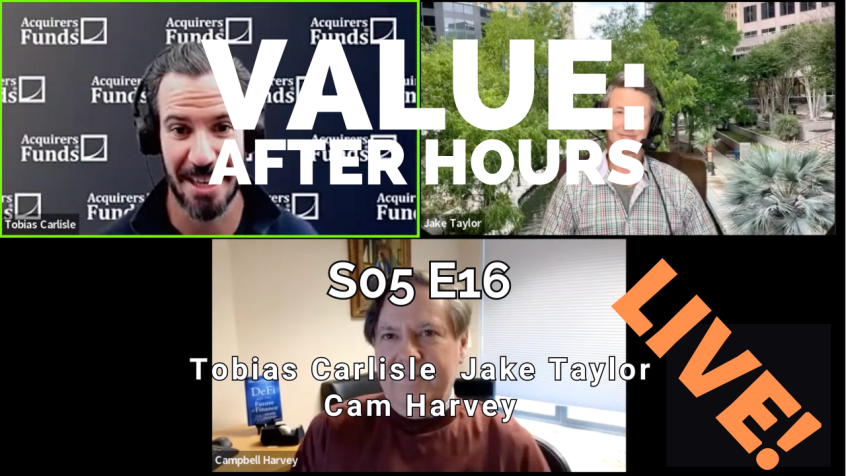During their latest episode of the VALUE: After Hours Podcast, Harvey, Taylor, and Carlisle discuss Inverted Yield Curve Upending Banks Business Model. Here’s an excerpt from the episode:
Campbell: Right. So, let me go to another factor that I mentioned and that was the financial system. I said that it was relatively strong compared to what happened in the global financial crisis when the large banks were acting as hedge funds. So, taking extreme leverage and acting as hedge funds, which had like a Fed put option. We’ve made a lot of changes since then. My read of the financial system was that it also was not going to cause a contagion, if went into a mild recession.
So, I went through all of these factors. There’s more of them, but I had a major caveat and I said, “We can avoid a hard landing recession.” But on January 4th, I said, “The Fed needed to stand down, that if the Fed continued to increase rates, then that will cause unnecessary stress, in my opinion, and would lead us to a recession.” So, the Fed, as you know, has chosen to decrease the size of the hikes, but has not stopped. The Fed has not stood down in any way. This creates a second channel of causality from the yield curve to the economy. We can go through that channel. We’re living that channel right now and it’s a channel directly through the financial system. Let me explain what I mean here.
So, let’s think of just a simple model of a bank. Deposits come in and you pay the depositors the short-term interest rate. And then you take those deposits and you lend them out. So, you lend them out to companies and that induces some credit risk, but you’re careful in your due diligence, hopefully. You can also lend to the government, which means just buying government bonds. That’s the revenue that you’re getting. So, the revenue you’re getting are from the payments from the loans and the coupons on the bonds. The cost is what you’re paying the depositors.
This works great almost all the time, because almost all the time, short-term rates are lower than long-term rates. So, now let’s flatten the yield curve and potentially invert it. We’ve got a severe inversion rate now where it’s like 1.5%.
Tobias: 1.68 yesterday.
Campbell: Yeah, it is remarkable. It’s also remarkable given the size of rates. So, if you look at the percentage inversion, it is massive and historically unprecedented. But let’s go back to the bank. So, as that short rate is going up, you are paying more to your depositors. And given that you’re locked into longer-term investments like these loans to companies and the bonds that you bought, that’s not moving. Your business model is being upended. So, the business model works great if those long-term cash flows that are coming in are exceeding the short-term cash needs. So, when you invert the yield curve, you stress that model. Indeed, it could come to the point where it causes big problems. This is interesting to think about that we talk about the inverted yield curve, but it really matters the way that it inverts.
So, in the case that we’ve got today, both short-term rates went up and long-term rates went up. But short rates went up more than long rates. So, why does that matter? It matters because these banks have these longer-term investments. I guess Silicon Valley Bank is a great example of that, where they’ve got their commercial loans that had no problems, that failure had nothing to do with the quality of their loan book. It was very high-quality, but it was the loan book to government. So, the bonds that they were holding, and those bonds, even if you’re holding them to maturity, when the long rates go up, when interest rates go up, the value plummets. Maybe you can’t hold them to maturity. Maybe you have to sell. That’s where that bank went insolvent.
You can find out more about the VALUE: After Hours Podcast here – VALUE: After Hours Podcast. You can also listen to the podcast on your favorite podcast platforms here:
For all the latest news and podcasts, join our free newsletter here.
Don’t forget to check out our FREE Large Cap 1000 – Stock Screener, here at The Acquirer’s Multiple:



